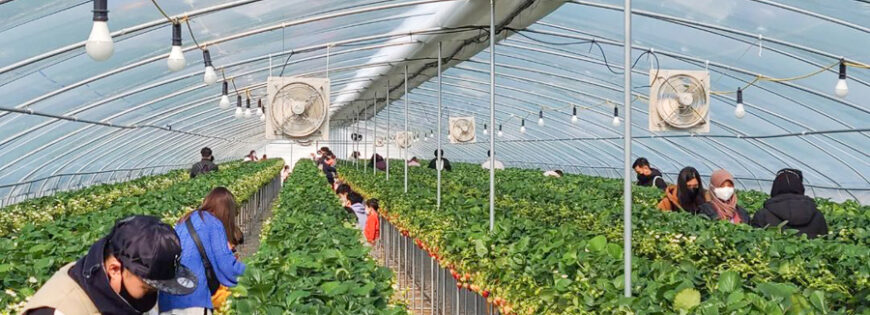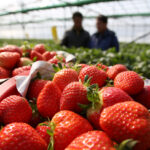Korean strawberries are very different from local varieties—in terms of size, color, taste, and aroma. It’s safe to say that strawberries from the Land of Morning Calm are superior to those grown in the highlands of Indonesia.
Take a vacation to Lembang or Puncak, for example—the strawberries you usually eat there tend to have a dominant sour taste, don’t they? This is why local strawberries are often processed into drinks or jams rather than consumed fresh.
That said, it doesn’t mean local strawberries aren’t good. The difference in cultivation methods and seasons creates a significant gap between Korean and local strawberries.
So, what makes Korean strawberries so special? Let’s dive into the details below!
What Makes Korean Strawberries So Special?
Korean strawberries are of premium quality, good enough to be exported outside Korea. In terms of color, Korean strawberries have a deeper, glossier red hue, whereas local strawberries tend to be paler.
In terms of taste, Korean strawberries are extremely sweet—comparable to candy—while local strawberries lean more toward sourness. The size is also significantly larger than that of locally grown strawberries.
There’s no denying that Korean strawberries stand out for their quality. But this excellence doesn’t happen by chance.
Technology plays a vital role in producing high-quality strawberries with the sweetness and flavor that consumers desire. South Korea has long embraced technological advancements in its agricultural sector.
For strawberry production, Korea uses highly advanced agricultural technology. Many strawberry farms are indoors, allowing them to produce fruit not only during winter but throughout the year.
The cultivation method is modern hydroponics, utilizing fast and efficient machinery. Korean strawberries are carefully nurtured, from being planted in smart greenhouses to fully automated care systems.
Fertilizer and plant protection treatments are kept to a minimum during the growing process and adhere to Good Agricultural Practices (GAP). The technology also helps prevent pest attacks and shields the plants from weather extremes. With this system, humidity and temperature can be easily controlled.
In addition, the Korean government regularly organizes training programs in cultivation techniques and production management to ensure the best possible outcomes. With such rigorous care, the final product is a top-quality strawberry—large, firm, not mushy, and highly aromatic.
Korean strawberries are also competitively priced. All of these factors contribute to their appeal and popularity in the market. To date, more than 40 strawberry varieties have been registered with the Korea Seed & Variety Service.
With their sweet taste and guaranteed quality, Korean strawberries have gained popularity not just domestically but internationally. Countries that have experienced their flavor include Hong Kong, Singapore, Thailand, Vietnam, Malaysia, the United States, Canada, and many more. Even in Indonesia, you can find Korean strawberries in several supermarkets that carry imported goods.
These are the reasons why Korean strawberries are loved around the world. Regular consumption offers not only health benefits but also joy to anyone who eats them.
If you’re a strawberry lover, it’s worth trying the sweetness of strawberries from the Land of Morning Calm. While the price may be higher, it matches the quality offered. So, what do you think—are you interested in trying Korean strawberries?



